
by Pablo S?nchez Chill?n (Urban 360?)
How can games be used for engaging citizens in urban matters?
How the addition of urban game-like programs, crowd sourced initiatives in real/digital spaces and temporary urbanism can improve the life in smart and connected cities?
Cities are the ground zero for digital innovation. The urbanization of the world now takes place in the digital era, where connectivity is a core feature of urban functions. Smart Cities are supposed to be networked cities where ICTs are a vehicle for community intelligence, for sustainable ecologic and social growth, as well as participatory actions and civic engagement. Technologies must be adaptable to urban environments, and the city must be hackable, changeable and suitable for digital/real participation, loosing ?in quite reasonable terms ? the the top-down schemes for urban planning and city management.
Our cities are complex ecosystems and citizens - if there is a common understanding for what is citizenry in the digital era- are changing the way our cities look out ? and work out ? by being smart, adaptive and innovative. While technologists boast of the potential for smartphone apps and social networks to connect citizens to institutions and services in a urban context, cities are embracing the concept of city as a platform, as hyper-connected environments that harness the network effects, openness and agility of the real-time web.
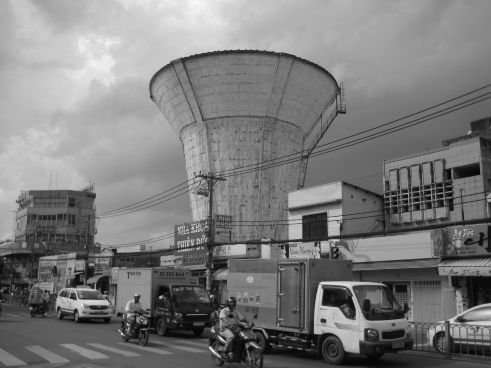
Considered a part of the DNA of the Smart City projects, Open Data policies are being deployed worldwide, and public offices are sharing their records and documents, allowing anyone to download a public dataset ?for free- (as the credo for open data evangelists dictates) to create an app and share it with others. The open-data stream has taken root so quickly, and local governments around the world are welcoming civic hackers (whatever they have done before) and turning problems over to then, using that initiatives and their products for place making strategies. Opening the public information and public goods for its re-use offers new opportunities to explore other ways of offering public services that have been traditionally delivered by public administrations, fostering public innovation and civic engagement.
Among?the different issues of urban realities, platforms like Code for America, are trying to build a network of cities, citizens, community groups, and startups, all equally committed to reimagining government matters for the 21st century. The European iCity project aims at making a step forward in the co-creation of services of public interest by third parties (developers, small and medium enterprises,?) that are pushing for their space as service providers in the urban spaces of Smart Cities. The project intends to develop an approach to allow these interested parties to create, deploy, operate and exploit services based in the use of available public information, digital assets and infrastructures in cities. This represents a shift in the governance of cities and the concept upon which traditional public service delivery has been based.
Beyond the Open Data angle, the connected and flat platformed city needs of the increased participation of minded-citizens to face the challenges and discuss the issues of contemporary urban contexts.
Cities are under great pressures, struggling with budget cuts and outdated technology, and need to cultivate and to engage the future generation of citizens, familiar to technologies and prone to evade from the territorial matters by meeting people in ubiquous and non-placed networks. The languages, social proceedings and aspirations ot the ?web generation? are diverse from the precedent ones and cities face the risk of tolerance of new urban coexistences with an army of ?zombie geeks? absolutely absent from urban and civic matters.
The traditional roles of citizenry, still played in our cities in a wide range of arenas, can be broaden by the progressive assumption of a web-centric and open approach to problem-solving, calling 2.0 neighbours into action, holding hands with the old generation, working together to innovate and improve cities and coexistence.
Maybe just another ?hype? for scholars, bloggers or funny coaches, an extended definition of Gamification talks about the use of game design techniques, game thinking and game mechanics to enhance non-game contexts (applications and processes) in order to encourage people to adopt them, or to influence how they are used. Gamification works by making technology more engaging, by encouraging users to engage in desired behaviors, by showing a path to mastery and autonomy, by helping to solve problems and by taking advantage of humans? psychological predisposition to engage in gaming. The technique can encourage people to perform chores that they ordinarily consider boring, distant or unchallenging, by playing diverse roles in competition and collaboration with others, in search of a reward.
Civic Gamification (as games are becoming a natural part of the life of younger generations) can be of much interest for the updating of citizenry status, going straight to the core of the savvy and connected communities of ?civic -deactivated? neighbours. If cities add the Crowd Sourcing Focus to the gaming strategy, the transition from bubble Ego-systems to cityzentric urban communities ?-full of thinkers and doers moving in a game-like scheme of rewards and prizes to be played and mapped in urban contexts- becomes
Civic Gamification ? which is in a formative stage for urban matters- can also take advantadge of the current need of many young to locate themselves in urban civic spaces, mapping their activities while sharing with others location and real time information. Through the maps, and as the ?civic games? are played, the city becomes an open platform of innovation for interconnected users and a proper place for urban engagement.
The success of gamification strategies for urban matters proves that there is considerable room for improvement in the use oftechnology in the cities for building and promoting social consciousness through digital culture and the remarkable results for urban enhancing given by the discovery, development and full understanding of the multiple roles to be played by citizens and stakeholders among the real and digital layers of a connected-smart city.
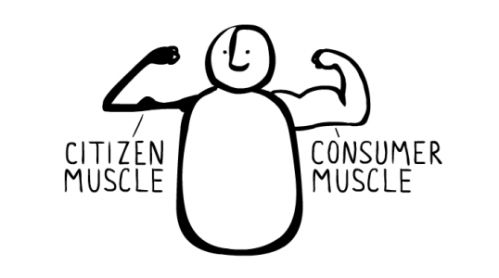
Besides of building a civic identity (the self-conscious proud belonging to a community) game-like proposals in urban contexts (on-line/off-line) mixed with crowd sourced tools and real transformations of the city through tactical urbanism activates the highest rates of ?CITIZENTRISM? (?Civicentrismo? in our original Spanish definition) or social consciousness and co-responsibility of citizens and stakeholders in the connected city by sharing purposes and civic projects spread by technology, allowing people to use their skills for civic good and sparking innovation and new business startups.
The implementation of gamification proposals such as points or rewards in urban ?contexts (traditionally, non gaming environments), either on-line or off-line, is starting to be used regarding for a vertical range of city matters, from planning processes to participatory events and civic public initiatives, improving the rates of engagement, compromise and place identity of citizens, and fulfilling the user experience. Although the gamification wave is still to come, some experiences prove that urban game-like actions can foster and stimulate changes in citizens? behavior, move and extend participation beyond the traditionally committed arenas and fulfill the potential of citizenry, especially when the gamification projects moves across both on-line and off-line layers in the cities.
So, If the city can create a game-like initiatives, move privates (single and collectively) into action, allow temporary (DIY) interventions in public spaces and enable platforms for multi-sharing experiences and rewards with other citizen/players, such gamification, crowd sourcing and tactical urbanism are the proper tools to create engagement and sense of community among solution-minded neighbors as the urban realm improves.
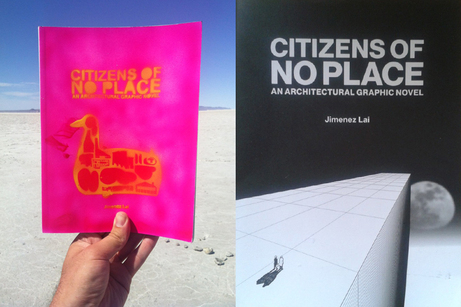
The creation of platforms, initiatives and actions accessible for citizens and stakeholders and the combination of civic gaming, crowd sourcing prospect and real time technologies can provide qualified resources for planners and politicians, as the user experience of citizens and the quest for prizes and rewards becomes a valuable tool for city design and management, giving full sense to the collective play.
Likewise, the continuous dripping of game-like initiatives in urban contexts, and the increased participation of full engaged multi-players can also help to create new opportunities for business and green economies.
Some weeks ago, This Big City described the use of MindMixer, an open source initiative, (running now in the City of Fort Worth- Texas) consisting on a plattform that models itself after a Town Hall rewarding points to users who comment and participate in generating ideas for the community. The ?civic? points can be transformed into achievements or prizes, as in a video game context.
The Engagement Game Lab (EGL) is an applied research lab at EmersonCollege focusing on the development and study of games and social media to enhance civic life. The EGL works directly with its partner communities to innovate civic engagement processes, augment stakeholder deliberation, and broaden the diversity of participants in local decision-making.
Community PlanIT (?Your Community. Your Future. Your Move?) is a game that transforms community planning into a fun and meaningful activity for all citizens. All within a series of time-sensitive missions, players compete with each other to contribute to their community. At the same time, they learn about local issues, connect with each other, and suggest solutions to problems. Players earn coins by responding to the challenges that comprise each mission. When they complete a mission, they can then pledge their coins to local community causes. At the end of the game, the three causes with the highest amount of coins will receive a monetary donation. Each game ends in a face-to-face Game Finale, where players meet with each other and discuss the results of the game with planners and decision makers. They have a say, support a cause, play the game and plan the future.
Detroit 24/7 is a game designed to give Detroiters an opportunity to creatively think, learn, and share ideas about Detroit?s future, by thinking about the kinds of things that are most important to the day-to-day quality of life in Detroit and the surrounding urban region. While MotorCity is lately well known for the progressive disappearing of urban realm and massive demolitions, engaging and linking inhabitants for discussion about future open the door to hope and crowd sourced solutions for the city.
A win-win (public-private) experience is given by the company Practically Green. Practically Green uses the social web to calculate metrics like household energy saving and reward users for their relative performance. The company validates that people are proud to share eco-conscious habits and that a little friendly competition positively reinforces their green activities. Everything is about become greener by using technology and social networking to educate, motivate and reward people for making green changes to their work and home life. Conceived in 2009, Practically Green took its inspiration for the Boston-based company from LEED, the exhaustive guide to designing and building greener buildings. But instead of LEED?s focus on building insulation or low-flow faucets, the company approach tallies up over 400 green behaviors, from commuting by bike to buying local produce, with direct impact over the city.
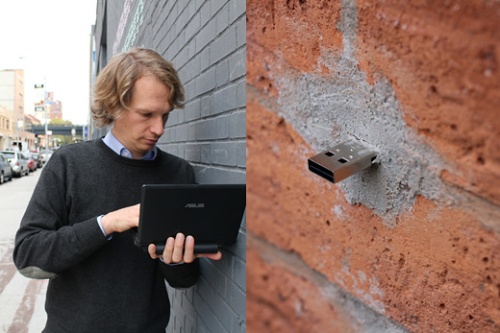
Let?s talk about TerraCycle. Founded in 2001 by a 20 years old student, the company?s purpose is to eliminate the idea of waste by creating national recycling systems for previously non-recyclable or hard-to-recycle waste. Anyone can sign up for these programs, called the Brigades, and start sending them waste. TerraCycle? converts the collected waste into a wide variety of products and materials and rewards the senders by paying money to anyone sending waste. With more than 20 million people collecting waste in over 20 countries TerraCycle has diverted billions of units of waste and used them to create over 1,500 different products available at major retailers ranging from Walmart ?to Whole Foods Market.
(Some of you could trace inspiration between TerraCycle model and the TrashTrack initiative from the Senseable City Lab (MIT)).
In order to propel green and civic choices into the mainstream, ?gamificators? point that the current need is to make it enjoyable, accessible and rewarding.? That is, for instance, the aim of Guerillapps, introducing Trash Tycoon, which applies Zynga-like gameplay to bridge the gap between virtual and real-world sustainable living. And the Apps? CryptoZoo aims to get gamers off the couch and into the streets, letting them find clues about mythical animals in the real world and exercise in their spare moments. Despite of the freak angle, this alternate reality game ? mixing computer fantasy with real world tasks can help to improve physics for the user and knowledge of the city.
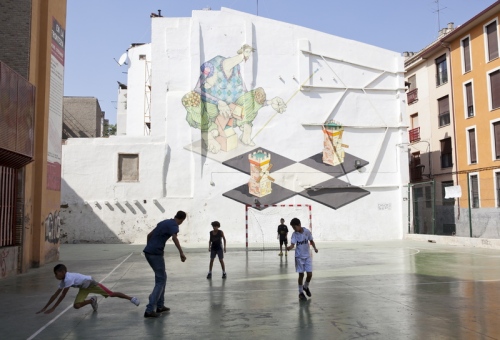
In Europe, urban games can also change our perception of routine spaces, inviting us as citizens to take over public spaces and encouraging interactions with strangers.
For instance, Berlin?s?Invisible Playground collective makes Street Games, Audio Adventures and Playful Theater that turn the city into a giant playground. In London, inhabitants and visitors can find 99 tiny games in public space. The games are part of?Showtime, a free outdoor arts festival that gives all Londoners the chance to enjoy ?world class entertainment and culture on their doorstep. Walkers who look closely will find the miniature games in all kinds of places, varying from bus stops to?bandstands and from parks to shopping malls. The little games are everywhere; the only thing people have to do is to find the round stickers on walls and pavements in streets and parks that explain the rules of the easy-to-play games. In that case, far from brainy strategies, none of the 99 site-specific street games require any special equipment, nor do they have any special goal. They seem to be there just for fun (and the joy of living in a funny city).
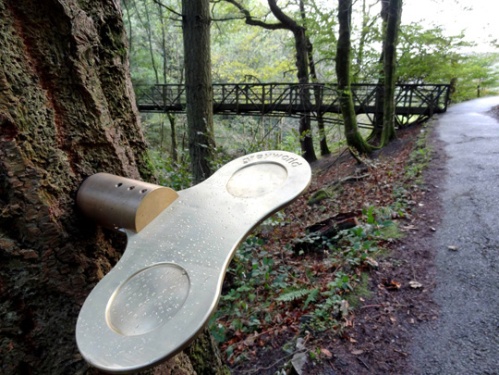
So, why not structure planning and city management processes under a playful vision looking involving lots of players and helping to change people?s perspective of a place??
?
Civic Gamification is here to stay. Let?s play!
For further info:
http://invisibleplayground.com/(Sebastian Quack?s, Invisible Playground site)
http://gamificationworldcongress.com/?(Valencia?s next Congress on Gamification/Sept. 20. Unfortunately, not much talk about civic gamification)
http://docs.fieldsofview.in/public/fov_games_booklet_8Jun2012.pdf (Info about City Game, a turn based game in which players take turns in placing blocks that represent pieces of infrastructure onto a playing area ? India)
http://thisbigcity.net/future-city-crowd-sourcing-gamification-city-2-0/?(This Big City web focus on gamification)
http://news.techworld.com/green-it/3345054/gamification-driving-corporate-sustainability-initiatives/?(Tech World on Gamification)
http://www.smartplanet.com/blog/business-brains/gamifications-new-role-gathering-user-behavior-data/25774?IBM?s smarterplanet blog focus on gamification)
Me gusta:
Be the first to like this.
chicago weather star jones wheres my refund photo of whitney houston in casket carrot top george huguely whitney houston casket photo
কোন মন্তব্য নেই:
একটি মন্তব্য পোস্ট করুন